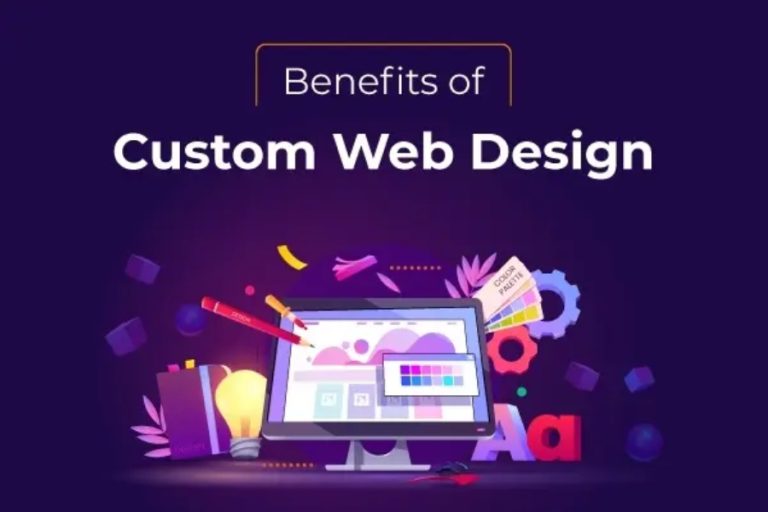Front End Development: The Complete Guide
Front-end development is about creating the parts of a website or app that people see and interact with. It’s all about making things like buttons, menus, and text look good and work well. Front-end developers use languages like HTML, CSS, and JavaScript to build these parts. They also use frameworks and tools to make their job easier. The goal is to make websites and apps easy to use and nice to look at. So, if you like designing and making things user-friendly, front-end development might be for you!
Table of Contents
What Is Front End Development?
The user experience is the main emphasis of front-end development. As front-end developers, you create the components of an application that end users can access directly using the associated code and design methodologies. Your aim is to make the overall interface simple, quick, safe, and elegant so as to encourage user engagement and involvement.
Front end app development frequently concentrates on particular design components, such as text colors and styles, graphics, graphs and tables, buttons, and general color schemes, in order to create an appealing user experience. These components are essential to improving the application’s aesthetic appeal and usability.
To effectively construct user interfaces, front-end developers need to possess a particular set of skills. This calls for competence with CSS preprocessors like Sass and Less as well as coding languages like HTML, CSS, and JavaScript. A degree in computer science or a similar discipline is frequently pursued by aspiring front-end developers, however it is not always required. It is imperative to have a solid basic understanding and expertise in coding languages like JavaScript, HTML, CSS, and increasingly, jQuery.
Furthermore, it’s helpful to comprehend server-side CSS processing methods and how they’re used in web construction. Front-end developers also need to know how to style text using CSS, including selecting the right colors and styles to make content readable and increase user interaction. They should also know how to use TypeScript, a superset of JavaScript that gives the language static typing capabilities.
Front End Development Vs Back End Development
| Aspect | Back-end Development | Front-end Development |
|---|---|---|
| Definition | Building components for running the application behind the scenes. | Building components that interact with users. |
| Examples | Data storage, infrastructure, integration with external systems, programming languages. | User interface, buttons, user-entered data, websites, UX features. |
| User Access | Not accessible to users. | Accessible to users. |
| Purpose | Provides functionality and processes data. | Focuses on user interaction and experience. |
Programming Languages for Front End Web Development
HTML
A fundamental component of front-end web development is the HyperText Markup Language (HTML) computer language, which establishes the organization and semantics of web content. Browsers display text or load elements using HTML to create webpages for users that include hyperlinks and links to other webpages.

CSS
The standard language that defines how HTML text is displayed, including fonts, background and foreground colors, etc., is called Cascading Style Sheets (CSS). You can manage the components and design layout of a design for a variety of devices, including tablets, smartphones, and desktop computers, with CSS. The header, body, footer, text, asides, and sections are a few examples of the components.
JavaScript
Website functionality can be increased beyond HTML and CSS with JavaScript (JS). With JS:
- Websites are capable of dynamically refreshing and reacting to user input without requiring page reloads or other modifications.
- Animated user interface elements, such picture sliders, pop-up windows, and complex navigation menus, can be modeled.
Front End Development Frameworks
Angular
With Angular, an open-source JavaScript framework that gained popularity after being developed by Google, you may use the HTML syntax to present highly dynamic results. Angular uses an effective modular architecture based on the Model-View-Controller (MVC) pattern, which separates the structure of a website into three sections. Specifically, Angular uses the dependency-injection design pattern and TypeScript to enable cleaner code.
React
React is an open-source, declarative JavaScript framework that was introduced by Meta in 2011 and is currently maintained by a sizable community. Its component-based architecture facilitates code reuse. With the help of the virtual Document Object Model (VDOM), a lightweight JavaScript representation of the DOM, React makes it easier to update views more quickly, improving performance. React can be used to create single-page apps (SPAs).
jQuery
The open-source JavaScript library jQuery is widely used and has a large community of user-created plugins supporting it, making it easier to construct web apps. For instance, jQuery applies effects to website elements, such as fade-in and fade-out, and modifies CSS values by integrating JavaScript functionalities. Additionally, jQuery makes it easier to integrate event handling, asynchronous JavaScript and XML (Ajax), and HTML DOM modifications.
Vue.Js
Vue.js is a core library written in JavaScript that focuses solely on the view layer, allowing the creation of unique web interfaces and single-page apps. To achieve the required results, you can combine this library with other tools and libraries.
Bootstrap
A popular, open-source framework for developing responsive and mobile-first websites, Bootstrap offers CSS-based and JavaScript-based templates that include components like navigation bars, progress bars, thumbnails, and dropdowns, all of which you can incorporate into webpages.
With the help of built-in code, Bootstrap creates responsive pictures that adjust automatically to fit the screen size. Additionally, you may create and deploy interactive solutions for picture carousels, transitions, and modal popups using the JQuery plugins included with Bootstrap.
Semantic UI
Semantic UI is a well-documented development framework that uses the semantic language to make it easier to create flexible layouts with HTML. It provides components for different functions. Numerous tools and apps from other parties can be integrated with Semantic UI.

Svelte
During the build stage of the development process, Svelte is a compiler that transforms declarative components into highly optimised vanilla JavaScript that precisely modifies the DOM. That differs from the methodology used by frameworks like Vue and React, which operate in users’ browsers while applications run.
Preact
Preact extends stable platform features, registers genuine event handlers, provides a thin VDOM layer, and interfaces with other frameworks. Preact can be used directly in browsers without the need for translations.
Because Preact is so lightweight, the majority of the application consists of developer code. This means you have less JavaScript to download, parse, and run, which frees you up to work on other projects.
Ember.js
An open-source JavaScript framework called Ember.js is used to create sizable client-side web applications with MVC-model-organized, structured code. This framework makes use of handlebar templates for views and routes as models. Controllers are used to modify the data within the models.
Buisness Benefits of Front End Development
Improved User Experience
Developing the front end is essential to improving the user experience. Well-designed, useful, and aesthetically pleasing websites are more likely to draw and keep users across all platforms. Users are encouraged to explore your material by simple navigation and intuitive interaction, which eventually increases the likelihood that they will become customers.
For example, mobile consumers may find it difficult to navigate websites with subpar front-end design, which could result in a high bounce rate. Nevertheless, excellent front-end programming makes sure that the website automatically resizes to fit the screen of the device, offering a convenient and easy-to-use interface. The profitability of your organisation can be directly impacted by the increased engagement and happiness that this improved user experience can bring about.
Lower Maintenance Costs
Development and maintenance efforts were increased in the past since businesses frequently had to maintain several versions of their websites for people accessing them on desktop and mobile devices. All-device responsive websites can be made, though, using contemporary front-end development techniques. Because updates only need to be implemented once, this lowers both the initial development costs and maintenance requirements.
Higher Conversion Rates
Increased conversion rates can also result from superior front-end development. A better user experience encourages visitors to stay on your website longer, increasing the likelihood that they will make a purchase or sign up for a service.
Additionally, a strong front end helps raise the search engine ranks of your website. For example, Google has said that it favours websites that employ strong web development techniques since they make content analysis and indexing easier. Increased visibility through higher search engine results can lead to more people visiting websites and converting at a higher rate.
Faster Web Pages
In the digital age we live in today, speed is everything. Web sites should load rapidly according to user expectations; otherwise, bounce rates may increase. Remarkable front-end development can enhance the functionality of your website and guarantee quick loading times on all platforms. As loading speed is a crucial component of search engine algorithms, faster loading times not only enhance user experience but can also positively impact your search engine ranking.






